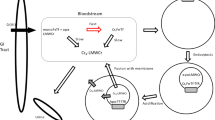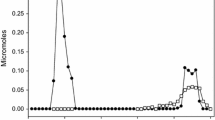2
-transferrin and the nutritional supplement chromium picolinate, Cr(pic)3, was examined. These results are consistent with the model of the mode of action of LMWCr; a Hill study indicates the four chromic ions bind to apoLMWCr in a highly cooperative fashion (n=3.47) with a binding constant of 1.54×1021. Chromium is readily transferred from transferrin to apoLMWCr at near neutral pH. The results also suggest that reduction of the chromic center of Cr(pic)3 may be required for the supplement to release chromium; thus, release of chromium is related to a mechanism by which Cr(pic)3 may generate hydroxyl radicals in cells.
Access this article
We’re sorry, something doesn't seem to be working properly.
Please try refreshing the page. If that doesn't work, please contact support so we can address the problem.
Similar content being viewed by others
Author information
Authors and Affiliations
Additional information
Received: 23 August 1999 / Accepted: 1 December 1999
Rights and permissions
About this article
Cite this article
Sun, Y., Ramirez, J., Woski, S. et al. The binding of trivalent chromium to low-molecular-weight chromium-binding substance (LMWCr) and the transfer of chromium from transferrin and chromium picolinate to LMWCr. JBIC 5, 129–136 (2000). https://doi.org/10.1007/s007750050016
Issue Date:
DOI: https://doi.org/10.1007/s007750050016




